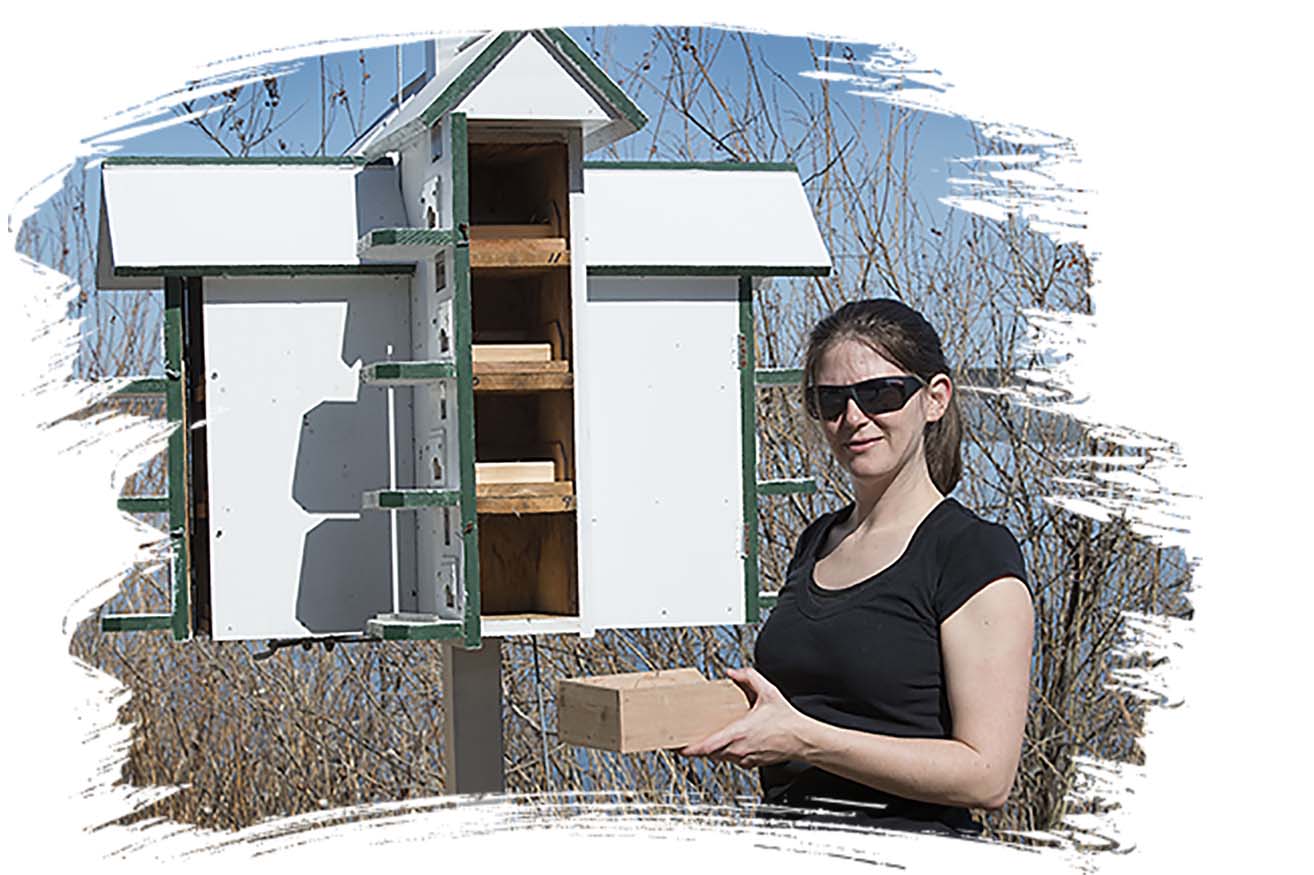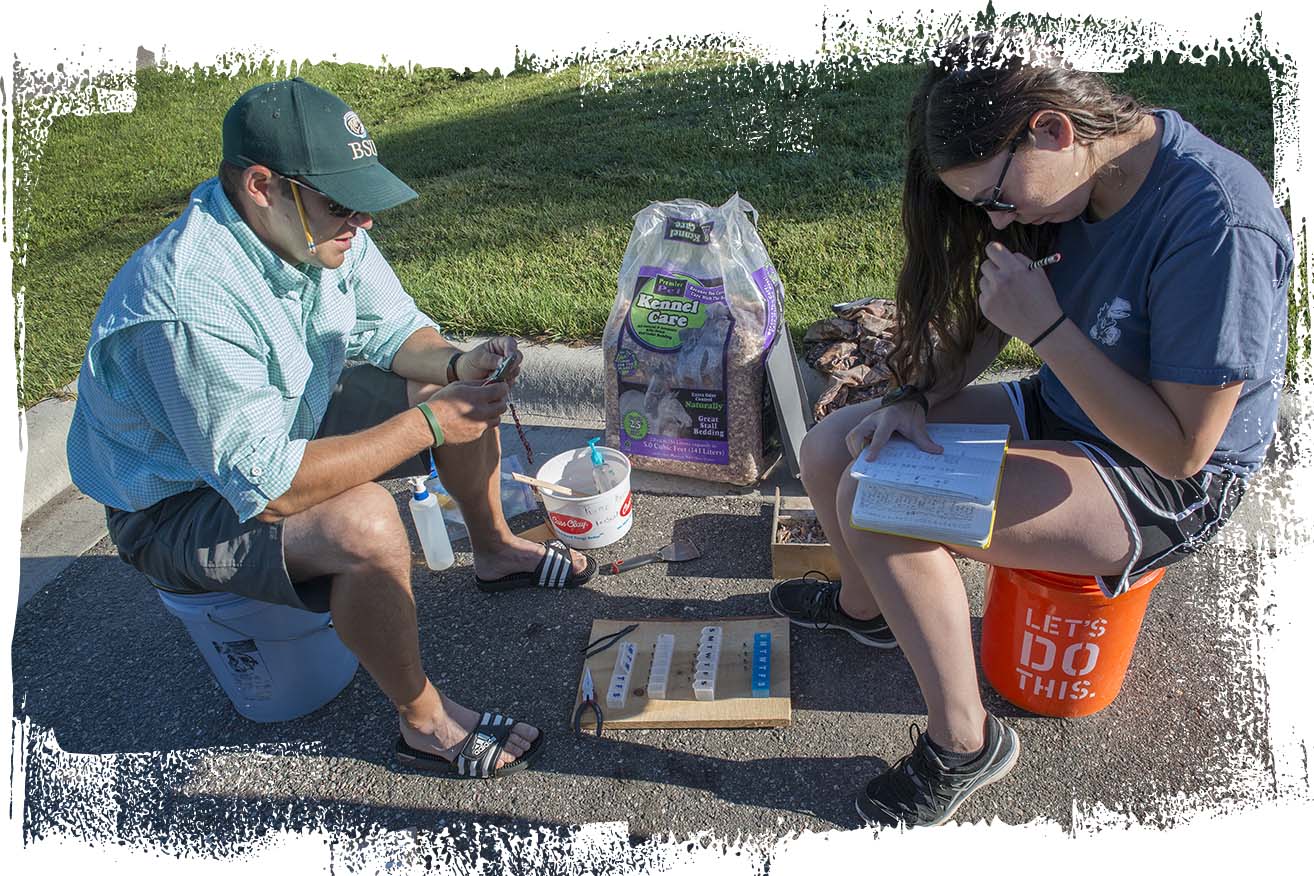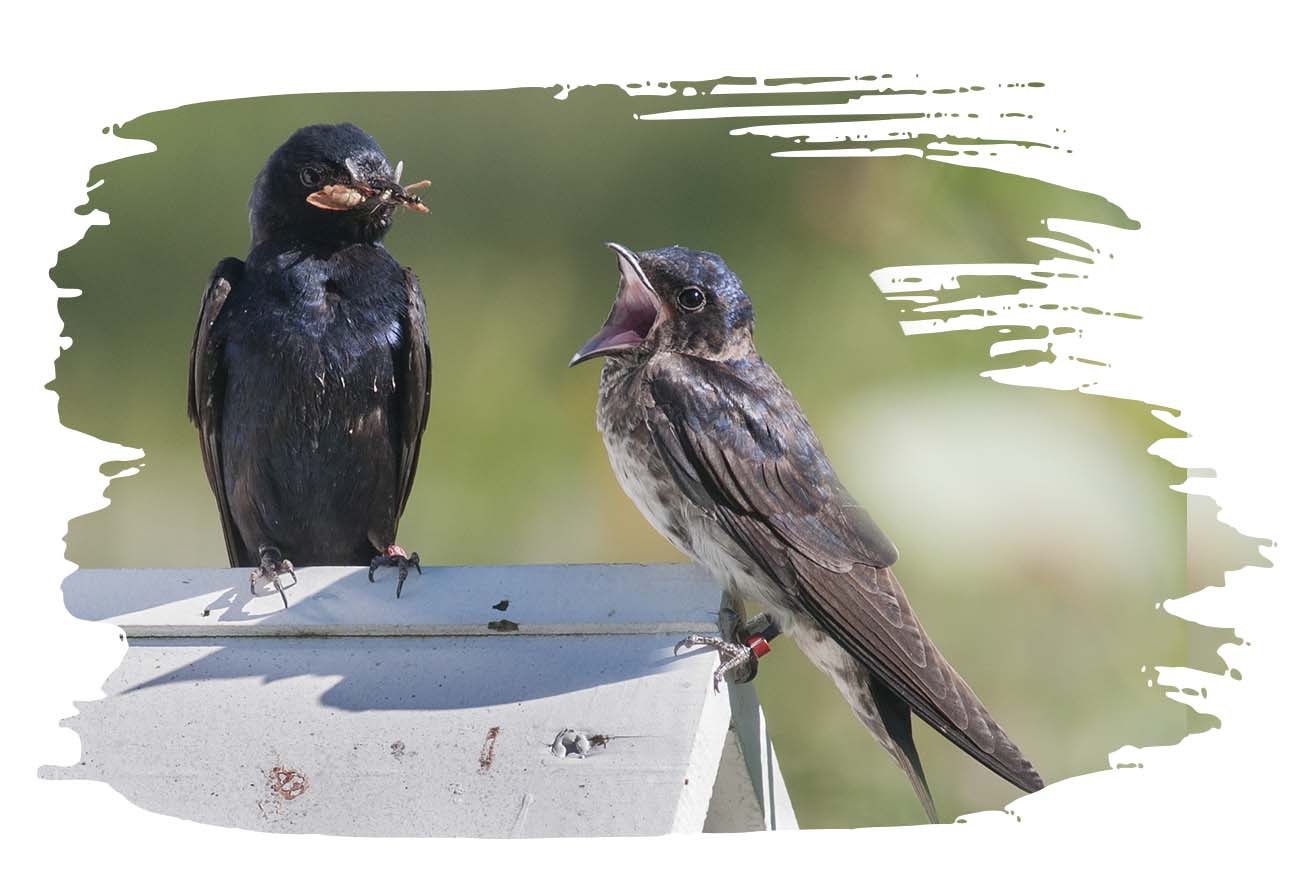


Sustainability is a frequent theme for student research at Bemidji State University, especially in the fields of aquatic and wildlife biology.
 |
| This story originally appeared in the Fall/Winter 2017 edition of Bemidji State University magazine. Read the entire issue online. |
Over the past four years, both graduate and undergraduate students have worked with Dr. Brian Hiller, associate professor of biology, to band 1,500 purple martins to help solve the mystery of their declining migration from South America.
Climate change and the insect eaters’ reliance on a shrinking supply of human-provided housing are among possible explanations, Hiller said.
Bemidji State maintains two martin houses along its own Lake Bemidji shoreline. Hiller and his students also monitor two martin houses further up the shore at Cameron Park, installed in collaboration with the city of Bemidji and the Minnesota Department of Natural Resources, as well as two others on private lakeshore property and a seventh on Lake Lomond in Bagley.
The effort also includes regional Audubon societies, the Minnesota Ornithological Union and the Mille Lacs Band of Ojibwe.
Biology senior McKenzie Ingram, from Lee’s Summit, Mo., worked with Hiller to band 434 purple martins last summer. Because the martin houses have removable drawers, and the birds don’t mind being handled, they can be safely banded and returned.
Ingram also monitored the birds from afar. “I had this huge spotting scope to read their tiny little bands around their legs,” she said. “I would record their age, sex and the band number, and then the weather, and how many birds total, because they don’t all have bands on.”
Most recently, BSU used simple bands with identifying letters and numbers, but in 2015 Hiller and graduate student Cathy Henry attempted to use GPS to track the martins’ migration from Bemidji to the Amazon rainforest. They banded 10 juvenile birds with geolocators, but none returned.
Over two years, Henry checked colonies in Bemidji and Bagley every three days and recorded the martins’ band numbers and reproduction. She also used Doppler radar to identify roosts where they gather before heading south. Animated radar data indicated departing flocks.
“I would go to the area well before sunrise, launch a kayak and paddle around the lake, listening for purple martins calling,” said Henry, who now works as a wildlife technician with the Idaho Department of Fish and Game while preparing to defend her BSU master’s thesis on martin populations.
Hiller said one theory for the birds’ population nosedive in Minnesota is their historic dependence on martin houses, once much more common than they are today.
“The largest reason is that martins are almost exclusively reliant on people putting up housing for them,” Hiller said. “They switched over from using natural cavities to those that humans provide.”
In addition, the earlier arrival of spring in the Northern Hemisphere because of climate change may put the martins’ migration out of sync with their insect food supply.
“If spring happens earlier, then the bug hatch might happen earlier and it might not coincide with when you have to feed your babies all that protein,” Hiller said. “It’s about that connectivity. The world is connected in ways that sometimes people don’t think about.”
Written by Bethany Wesley
